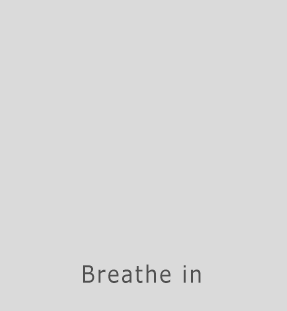It can damage DNA, harm the brain, and increase the risk of developing heart disease, diabetes, sleep disorders, and more—yet many of us tolerate it in our daily lives. What is this dangerous culprit? Stress.
We all feel stress to some extent, especially when it comes to our jobs:
- In the UK, work stress was the most common type of stress reported in 2020, outranking financial, family, and health stress.
- In the U.S., work was the number one cause of personal stress in 2019.
- A recent survey conducted in 23 markets—including Nigeria, Turkey, and Indonesia—found that workload is a top stress trigger.
So the question is, what can you do about it? Below, we’ll take a deep dive into stress, its causes, and the evidence-based ways you can fight it.
What Is Stress? Maybe Not What You Think
People tend to think of stress as either a badge of honor or a ruthless enemy, so let’s call it what it really is: “Stress is an expected human response to challenging or dangerous situations,” according to Healthdirect Australia. You’ve probably heard the term “fight or flight,” right? That’s the stress response; they’re one and the same.
According to Harvard Health Publishing, when your brain senses a threat—such as a car coming toward you or a looming project deadline—it tells your sympathetic nervous system to release chemicals like adrenaline and cortisol into your bloodstream. These stress hormones fire up your muscles, raise your heart rate, increase your breathing, and replenish your energy to help you react quickly and address the situation.
In the aforementioned examples, stress would help you swerve to get out of the car’s way or work faster on your project so you can turn it in on time.
Chronic Stress: A Global Problem
So if stress is a normal bodily response, why should you try to reduce it? Because stress becomes problematic when it becomes long-term or chronic.
Chronic stress harms you in various ways, including:
- It can lead to burnout. Left unchecked, chronic work stress can become full-blown burnout. The problem is so ubiquitous that, in 2019, the World Health Organization updated its definition of burnout in its handbook of diseases, calling it a “syndrome” caused by “chronic workplace stress that has not been successfully managed.”
How do you know if you’ve got it? The WHO says burnout is characterized by “feelings of energy depletion or exhaustion; increased mental distance from one’s job, or feelings of negativism or cynicism related to one’s job; and reduced professional efficacy.”
- It can damage your DNA. Research suggests chronic stress leads to shorter telomeres—the protective casings at the end of chromosomes—which can lead to early cell aging. Before you invest in that $95 fine-wrinkle cream, take a closer look at your stress levels!
- It can harm your brain. One study published in Neurology found that high levels of cortisol (a stress hormone) are associated with lower brain volume and poorer memory, especially in women.
- It can lead to or exacerbate physical illness. Research has linked stress to health problems such as heart disease, diabetes, and sleep dysfunction. And it’s not just a first-world problem: One far-reaching study of more than 150,000 people in 142 countries found that, across the globe, negative emotions (including stress) negatively affected physical health.
- It can lead to or exacerbate mental illness. Chronic stress can lead to depression and increase your risk of developing an anxiety disorder. It can also worsen existing mental illness symptoms.
A 4-Step Framework For Reducing Stress And Activating “Rest and Digest”
We don’t know about you, but thinking about the issues that chronic stress causes is a bit stressful in itself. Here’s the good news: You have an in-built tool to mitigate your stress response. It’s called the relaxation response!
That’s right. Just as your sympathetic nervous system activates “fight or flight” mode to prepare you for a threat, your parasympathetic nervous system can activate “rest and digest” mode to help you relax. And you have some control over it.
You can follow the steps below for reducing stress by turning on the relaxation response; they’re based on the research and frameworks of two notable members in the world of psychology:
- Marc Brackett is the founding director of the Yale Center for Emotional Intelligence. He co-created an evidence-based approach to teaching emotional intelligence called RULER, which stands for Recognize, Understand, Label, Express, and Regulate.
- Mary Poffenroth is a fear researcher and biology lecturer at San Jose State University. She developed a method for managing fear called RIA, which stands for Recognize, Identify, and Address.
Both frameworks have similarities that may be useful for managing stress. Let’s explore them and help you arrive at relaxation station.
Step 1: Identify What You’re Feeling
Stress is often confused with lots of other things—anxiety and depression, for example. And often, people are stressed without even knowing it. Because stress elicits physical symptoms (e.g., an upset stomach), people may misattribute the symptoms to something else (e.g., “I must’ve eaten something bad.”)
So the first step in reducing your stress is to recognize it’s there. Why? Because there is power in naming things. Research shows that naming emotions, known as “affect labeling,” can help dampen unpleasant feelings.
When you’re under stress, according to the Cleveland Clinic, you may experience the following symptoms:
- Rapid heartbeat
- Dizziness
- Shaking
- Sweating
- Muscle tension
- Headache
- Upset stomach
- Sleep problems

Is It Stress, Or Is It Anxiety?
Differentiating between stress and anxiety is tricky, especially because they share many of the same symptoms. They are, however, two uniquely different emotions.
The American Institute of Stress says stress is a physiological response, while anxiety “has a cognitive element (worry) and physiological response (stress), which means that we experience anxiety in both our mind and our body.”
While it’s normal to feel anxiety from time to time, if it gets to the point that you feel you can’t manage or it’s affecting your daily life, it may be an anxiety disorder, which requires treatment. Your doctor or a mental health professional can help.
Step 2: Locate The Source (The Stressor)
Okay, so you’ve identified that you’re experiencing stress. Step one = done!
The next step is to locate its source. Stress, unlike anxiety, will always have an external source. Where is your stress coming from?
Some examples of workplace stressors include:
- Pending project deadline
- Poor communication within your team
- Upcoming performance review
- Toxic colleagues
- Being underpaid
- Noisy work environment
- Taking on more responsibilities than you can handle
To pinpoint your stressor, pay attention to the times when you’re feeling the physical symptoms of stress mentioned above (e.g., racing heart, sweatiness, muscle tension). As soon as you’re aware of the feelings, pause what you’re doing, and conduct a quick scan of your surroundings.
Is there a particular aspect of your environment that prompted the stress?
Maybe it’s an overbearing coworker who barged into your office, disrupting your work; or perhaps it’s a dreaded project you’re attempting to tackle. Whatever it is, take note of it. It can also help to keep a running list of stressors in a journal so you can keep an eye out for any recurring themes.
Step 3: Address The Stressor
Once you’ve located the source of your stress, ask yourself, “How can I eliminate or reduce this stressor?”
Sometimes, when you’re feeling stressed at work, it’s because something is not operating in the way that it should. The good news is, you might have the power to improve it. For example:
- If your team isn’t communicating well, consider having regular one-on-one meetings and equipping your team with the right communication tools.
- If your environment is too noisy, try putting on headphones and playing white noise, or see if you can move to a different location.
- If you took on more work than you can handle, delegate tasks to others, if possible, and talk to your manager about setting more realistic expectations.
No matter the stressor, consider first what you can control about it. You might be able to eliminate the stressor or at least reduce it.
Step 4: Activate Your Relaxation Response
Oftentimes, though, workplace stressors cannot be changed. For example, a creative director at an ad agency may feel stressed out by having to pitch ideas to clients, but because that’s an essential part of her job, there’s no way to eliminate the stressor.
In cases like that, the stressor (pitching ideas) will not change because it’s inherent to the job (creative director). The only thing she can control is how she responds.
Maybe you’re in a similar situation, where you can’t leave your job, but parts of it are causing you stress. If that’s you, take heart: While the sources of stress are out of your control, you do have the power to turn on your relaxation response.
5 Evidence-Based Strategies to Activate Your Relaxation Response
1. Breathing Techniques
Part of the fight or flight response is that your breathing pattern switches to faster, shallower breaths. If this rapid chest breathing goes on for too long, though, you could hyperventilate, leading to chest pain or dizziness.
Practicing diaphragmatic breathing can neutralize the stress response and encourage relaxation. Diaphragmatic breathing (or “belly breathing”) is different from chest breathing because it engages your diaphragm, the muscle at the base of your chest that presses your belly out as you fill your lungs with air. To make sure you’re breathing from your belly and not your chest, place your hand on your abdomen and focus on making it rise and fall with each breath in and out.
A study in China found that after 20 sessions of diaphragmatic breathing exercises, participants showed a decrease in negative affect and the salivary concentration of the stress hormone cortisol.
In 2016, researchers in India investigated how slow breathing affects heart rate, respiratory rate, and breathing pattern. They recruited 60 volunteers to partake in the study:
- The volunteers were asked to inhale while counting to five and then exhale while counting to five, with no pause between breathing in and breathing out.
- They received training for one week.
- They were instructed to do the slow breathing exercise for eight to 10 minutes twice a day for the next three months.
After three months, participants’ average heart rate and respiratory rate had decreased significantly. And what’s more, the majority of participants had switched from thoracic (shallow) breathing to abdominal (deep) breathing. The study authors note that abdominal breathing is a response to relaxation.
One popular exercise that’s easy to do anywhere is the 4-7-8 breathing technique, where you inhale for four seconds, hold your breath for seven seconds, and then exhale for eight seconds. Try it now and feel some relaxation set in!

2. Physical Exercise
As you learned earlier, the stress response pumps adrenaline into your body to prepare you to confront or escape a perceived threat. Because workplace stressors typically don’t require you to physically fight off danger or run from a pursuing predator, this stress hormone builds up in your system with nowhere to go, leaving you shaky and irritable. This is also known as an adrenaline rush.
One way to blow off steam after a surge of stress? Exercise! Your brain produces endorphins during exercise, which can make you feel good and help you fend off feelings of stress. Further, one study at the University of Chicago found that non-exercisers experienced a significantly greater decrease in positive emotions after a stressful task than regular exercisers did, suggesting that regular exercise could shield people from “the negative emotional consequences of stress.”
Currently, the U.S. Department of Health and Human Services recommends that adults partake in at least 150 minutes of moderate-intensity aerobic activity, or 75 minutes of vigorous-intensity aerobic activity, per week. No matter where you are in the world, schedule some time into your week to sweat out the stress.

3. Mindfulness Meditation
What does it mean to be mindful? The Cambridge Dictionary defines it as “deliberately aware of your body, mind, and feelings in the present moment, in order to create a feeling of calm.” Mindfulness meditation is helpful because it brings you back to reality instead of letting your mind wander to the “what ifs” that don’t actually exist. Moreover, studies have found that mindfulness can reduce stress.
There are plenty of apps on the market to help guide you through mindfulness meditation. Here are two that have been proven to reduce stress in peer-reviewed research:
- Calm – At the University of Arizona, researchers recruited undergraduate students with elevated stress levels to participate in mindfulness meditation. Participants in the intervention group were asked to meditate for 10 minutes a day using the Calm app. After eight weeks of use, the intervention group showed significantly lower stress than the control group, and that effect persisted even four weeks later.
- Headspace – In the UK, researchers recruited employees from two large companies for their study on the effectiveness of mindfulness meditation delivered via a smartphone app. The intervention group was asked to complete one 10- to 20-minute meditation session per day using Headspace. After eight weeks of using the app, participants reported a significant decrease in job strain, and this positive effect lasted even eight weeks later.
4. Visualization
While mindfulness helps you focus on the present, visualization helps you imagine an ideal future. During a stress response, your brain runs wild with potential threats that lay in waiting. Visualization, then, does the opposite: It coaxes your brain into picturing good, calming things, thereby activating your relaxation response.
Visualization has long been a powerful tool used by professional athletes—so powerful, in fact, that when the Canadian team competed in the 2014 Winter Olympics, they brought along eight sports psychologists.
In a study by researchers Kennon Sheldon and Sonja Lyubomirksy, participants who visualized their best possible selves experienced a significant boost in immediate positive affect compared to the group that did a gratitude exercise. Why does this matter? Research has shown that positive emotions act as a buffer against chronic stress.
To boost those good feelings, try doing the Best Possible Self visualization for 15 minutes a day for two weeks. To help you get started, below is an excerpt from how the exercise was introduced to the participants of the Sheldon-Lyobomirsky study. It is based upon a 2001 study by psychology professor Laura King:
“Imagine yourself in the future, after everything has gone as well as it possibly could. You have worked hard and succeeded at accomplishing all of your life goals. Think of this as the realization of your life dreams, and of your own best potentials. In all of these cases you are identifying the best possible way that things might turn out in your life, in order to help guide your decisions now.”
No, visualization isn’t magic. It’s not going to remove stressors or make your life perfect. But when you’re wound up in worry, you’re imagining all the things that could go wrong, keeping your brain and body in fight or flight mode. By employing visualization techniques, you can elicit the relaxation response and give yourself a break from the onslaught of stress hormones.
5. Progressive Muscle Relaxation
Right now, become aware of your jaw. Is it clenched? Now, shrug your shoulders for two seconds, then relax them. You probably didn’t even notice how much tension you were holding until it was called to your attention.
When you’re under stress, your muscles tighten in anticipation of a confrontation or an escape. Often, while you’re sitting at your computer tackling some work problem, you can tense up without even noticing. To counteract this, you can practice progressive muscle relaxation to help you become aware of your muscles by tensing and relaxing them.
A nine-month study of workers in Malaysia found that the average stress levels of participants who practiced progressive muscle relaxation significantly decreased by the end of the study. The study authors write that their findings suggest even 10 to 15 minutes of PMR therapy per session can help to lower self-perceived stress at work.
So if you notice your body tensing up during times of stress, try a progressive muscle relaxation exercise to unwind. The idea is to intentionally contract each muscle group, one at a time, from the top of your head to the tips of your toes. Inhale as you tighten a muscle group; exhale as you relax it. By the end of the PMR exercise, your entire body should feel at ease.
Enough of Fight or Flight. Let’s Rest and Digest!
Hopefully, by now, you realize that stress is a normal part of the human experience. In small amounts, it protects you and helps you do your best work.
That being said, you don’t need to be in fight or flight mode all the time, nor should you be. With a little practice using the tactics mentioned above, you can train your brain to turn on the relaxation response and give your body a chance to rest and digest.
While these evidence-based strategies can help with normal levels of stress, sometimes, it gets to the point where you need medical advice and treatment to start feeling better. If stress is negatively impacting your life, or you think you may have anxiety or depression, make an appointment with your doctor to talk about treatment options or contact a mental health professional.
Editor’s Note: The spectrum of anxiety, including the vast range of clinical anxiety diagnoses, is varied and complex. People may experience anxiety in mild to moderate or occasional forms, or may live full-time with a serious anxiety disorder. If you feel, at any time, that your anxious feelings are negatively affecting your day-to-day life, please don’t hesitate to seek professional help. If you are currently struggling with or seeking treatment for your anxiety, we support you!








































